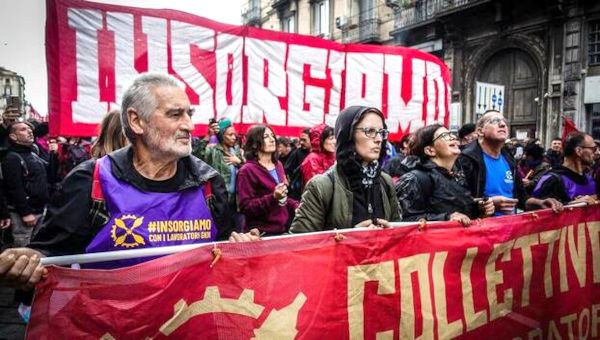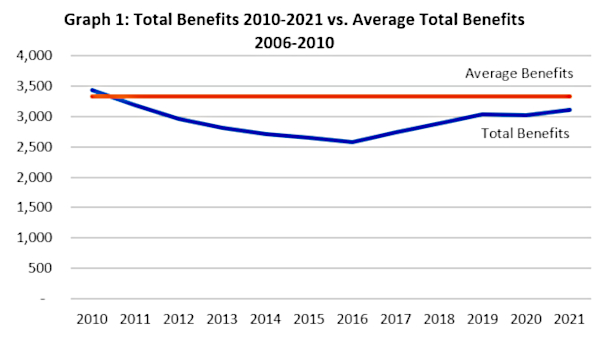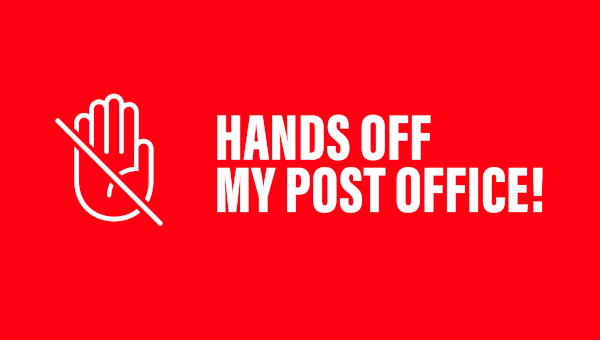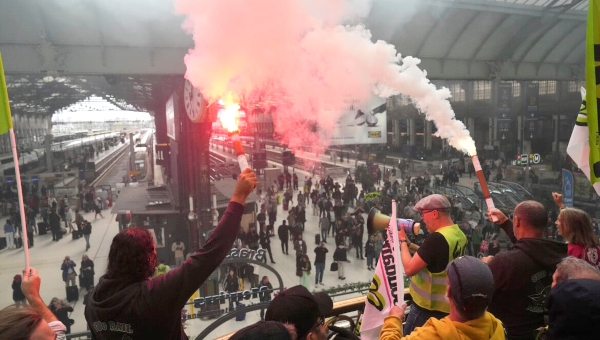Democracy: Too Important to Leave to the Members?
Earlier this summer, it looked like the Canadian Auto Workers (CAW) union was about to experience something truly unusual in its history – a contested campaign for national president. The last contest for the union’s top Canadian officer was in 1960, a quarter of a century before the formation of the CAW and a year when Tommy Douglas was Premier of Saskatchewan and John F. Kennedy was running for President of the United States.
A transition in leadership was coming: CAW President Buzz Hargrove would turn 65, the agreed mandatory retirement age for union staff and officials, in March 2009. His handpicked successor was Ken Lewenza who, like Hargrove, came out of Chrysler’s Windsor Assembly Plant. The succession also included anointing Peter Kennedy, the current Assistant to Secretary-Treasurer Jim O’Neil, to move up when O’Neil retired in August 2009. As Hargrove contemplated exactly when and how he would announce the timing of his retirement, two very credible candidates, both assistants to Hargrove, had declared their intent to run: Hemi Mitic against Lewenza and Carol Phillips against Kennedy.
The possibility of a break with tradition and an actual election did not come out of nowhere. During relatively good times, the absence of contested elections was commented on, but passively accepted. Now, with crises piling up in one sector in manufacturing after another in Canada (the state of the auto industry being the most publicized), a good number of CAW activists were increasingly frustrated and restless. It was in that context that rumors of an election began to circulate and the contesting candidates surfaced.
This was an opportunity that the union leadership should have jumped at. After years of growing demoralization inside the union, an election could have been a catalyst for union renewal, opening a space for membership participation in the crucial questions facing the union, and developing the candidates’ own thinking. How could the union’s dismal record in organizing new members be reversed? What changes in union priorities would an organizational drive imply and what commitments from the locals did it demand? The union’s formal policy against concessions was contradicted by the reality on the ground. What was needed to return the union to its slogan that ‘fighting back makes a difference’? International solidarity between unions is often discussed, but what could it concretely mean? The environment had emerged as a central issue that would transform everything about how we produce and live. Where did the candidates stand on the insecurities and opportunities this implies? The regional and sectoral composition of the CAW’s membership base is today radically different than when the CAW was formed, but the union’s structures have remained the same. What do the candidates have to say about how to take advantage of this potential, and what do the locals themselves want to put on the agenda in terms of structural change?
It was an opportunity as well to raise the issue of the CAW’s relative separation from the rest of the labour movement (notably its continued absence from Ontario Federation of Labour), at the same time that the CAW drifted closer to the corporate and political elite (symbolized by the joint dinner with Canada’s business and political elites in the middle of a CAW Bargaining Convention). Who are the union’s friends and who are its enemies? Where do the candidates stand on union support for the Liberals? Can the union really expect to address the crisis in manufacturing jobs, the restructuring of private services, the commercialization of social services, or reverse free trade without rebuilding ties to the rest of the Canadian working class and mobilizing working class communities beyond its own?
A contested election might have reminded people why unions remain so important and brought more members into the active life of the union. That opportunity, in terms of the contest for the CAW presidency, was thrown aside. The union leadership seemed more concerned with ensuring executive control over the presidential succession and especially determined not to open debates it could not control and risk commitments that might hold future leaders accountable. In a phrase that may come to define his legacy, Hargrove expressed his impatience with an open electoral contest for the leadership of one of Canada’s largest and most storied working class organizations in these terms: “We’re not a political party, we’re a union” (Globe and Mail, July 7, 2008).
Managing the Transition
Hargrove quickly moved to prevent such an open contest by calling a meeting of the National Executive Board (NEB) and of the appointed staff for July 8th to “put this thing to bed.” The NEB’s endorsement of Hargrove’s choices could be taken for granted. Though formally elected by union delegates, the NEB had never, a few secondary issues aside, demonstrated any collective autonomy from the CAW President. Nor did anyone expect this might change now.
The staff, however, was another matter. The majority of the CAW staff are experienced and skilled former elected local officials, with a history as activists and leaders in their own right. Though they cannot vote in any official union body, they have traditionally had the right freely to cast votes within the union’s ‘administration caucus,’ a political body that ensures that all who attend it will support the administration at union convention, but which meets before conventions to decide what resolutions and candidates for office the administration will endorse.1 The caucus system came out of the early right-left splits in the union in the 1940s. Such an organized opposition within the CAW had disappeared, but the administration caucus has continued as a form of control over what takes place at union conventions. Even as the CAW broke away from the UAW and its culture, it retained the essentials of the UAW’s leadership-controlled caucus system.
Mitic’s intention was to run within the caucus, which would have allowed staff members to vote for him there. He was thus intending to use one aspect of caucus tradition to challenge another, i.e. to open the possibility of a free caucus choice among the candidates (who all came from previous leadership team, even if Hargrove had pre-selected his favourites). But Hargrove brought the staff together not for a collective discussion among people with a wealth of experience as local leaders and activists, but as his employees. It was not their opinions he was interested in, but getting the staff in line well before they joined local activists possibly to challenge his candidate at the pre-Convention caucus meeting.
Because a rebellion was brewing, with the staff reflecting the wider dissension in the union, Hargrove was pushed into a further tactical step. On the morning of the scheduled meetings, the CAW President suddenly announced that he would retire by mid-September and a convention to choose his successor would be held before then. Virtually no union meetings are scheduled during the summer. Since workers would be at home or on vacation for much of July and August, any campaigning was essentially foreclosed.
Hargrove argued that the hurried timing was to avoid the ‘divisiveness’ of a ten-month campaign. Leaving aside that democracy functions because of differences, no explanation was given for why a shorter but more sensible period (such as one running to late-October) was also excluded. To some it looked as if the timing was not so much about union solidarity as with guaranteeing the victory of his candidate (the longer Hargrove stayed, the more of a liability he seemed to be to Lewenza’s candidacy), and limiting any debate over the union’s direction. Democracy was apparently too important to leave to the members.
The morning of the NEB meeting, Hargrove met with key board members from Quebec whose position was critical and who had pledged their support to Mitic. Coming out of that meeting they surprisingly switched their support to Lewenza. That loss was amplified because it potentially weakened the resolve of others both at the Board and on staff. Moreover, Hargrove presented Mitic with a catch-22: if he participated in the Board decision, he would have to abide by their vote (which was a foregone conclusion); if he refused, he would be understood to have left the administration caucus. Since Mitic was committed to running within the caucus and because he saw his support unraveling, he stepped down and joined NEB member Earle McCurdy from Newfoundland in calling for a review of ‘the process.’
Hargrove had won. At the staff meeting that followed, Hargrove made it clear that the staff, which could not vote at the convention itself, had a vote in the administration caucus – but only in line with what the NEB (i.e. the President) recommended. This meant not only that the approximately 150 staff had no say in the choice of CAW President, but that local delegates who participated in the caucus effectively faced an out-going President with multiple votes in his pocket. Though he had laid down the law that the staff had no right to vote independently, and though there was, in any case, no longer any alternative candidate for President, Hargrove insisted on a show of hands to endorse the NEB’s recommendation. The point of the vote was, of course, purely formal and symbolic: it merely allowed it to be claimed that a consensus had been reached, so that those who didn’t know what was really going on might think all this indicated the depth of the union’s democratic process.
Carol Phillips remains in the race for Secretary-Treasurer in August 2009, having declared that she will run outside the administration caucus. Phillips is a talented, progressive and respected candidate and though the demographic changes in the CAW might suggest that a woman should be supported for one of the top two positions, Phillips is running on her merits and not as an ‘affirmative action’ candidate. The CAW structures guarantee that this will be an uphill battle. The new President will have some ten months to establish his authority and consolidate support for his caucus running mate, Kennedy. The staff will only be allowed to work for Kennedy. And though the Convention vote will be by secret ballot, a good many delegates will be hesitant to leave the administration caucus even if they want to support Phillips, and having participated in the caucus they are likely to abide by caucus discipline. A critical test for her candidacy – one posed by the early defeat of Mitic – will therefore be whether any locals rebel against this.
Union Democracy
The question of union democracy involves more than voting for leaders: it is about empowering the members to collectively effect change. It’s therefore about both process and the kind of union that is being built. That is why the depth of union democracy and the degree of struggle often seem so closely linked.
When unions are fighting the status quo, a degree of democracy is virtually inevitable because it is essential. At those moments, workers receive information and analysis that counters what they get elsewhere. Educationals come alive. Workers develop their ability to articulate their cause and strategize. The capacity to organize in the workplace and community is deepened. The confidence that emerges from active participation spills over into other dimensions of workers’ lives and sometimes raises larger questions about democracy in society. These can be powerful and revealing: if we’re a democracy, why do corporations and financiers have so much power over our lives?
In contrast, when unions are only adapting to the status quo, democracy suffers because, from the leadership’s perspective, democracy may represent a problem rather than an asset. If the leadership is arguing for concessions, it is repeating the arguments of the corporations, not giving workers an independent perspective. If bargaining is reduced to making deals with companies, the members become a nuisance. Educationals on past struggles become counterproductive. Collective Agreements are rushed through without a real chance for consideration. Workers who vote against concessions are told to vote again ‘until they get it right.’ Actions that go against union principles cannot be justified, so they must simply be rammed through without reasoned debate. In this context, prospects of an election raising questions about how the union functions, as well as leadership accountability, are seen as a threat, not an opportunity.
As convoluted as the events around the CAW ‘almost-election’ were, it did highlight what has long been true but shrugged off: there is something broken in the union’s internal democratic process. It is telling that, a day after the NEB and staff meetings and before the administration caucus had met, never mind before the Convention itself, Ken Lewenza was already referred to as the new CAW President, thus foregoing even the formality of union democracy.
The much-needed debate inside the CAW should not be limited to how to fix the administration caucus. The problems go much deeper and involve issues central to all unions. What unions face today is rooted in the way North American unions organized themselves in much better economic times than for workers than the present. Not having understood that period to be an interlude, a break before the pressures of capitalism renewed attacks on the working class, unions did not prepare for what lay ahead. Workers are now suffering for that lack of understanding and preparation. While corporations have become more radical and aggressive, the labour movement has become more cautious and defensive. The most important question for the labour movement is to come to grips with those past failures and the need to become as radical as the other side. If we don’t develop a vision that fundamentally questions the anti-social logic of capitalism, and build the collective capacities that can challenge corporate power, things won’t just stay the same: they are likely get worse.
The real issue of Lewenza’s leadership is not, as some commentators have emphasized, his relative lack of experience outside auto and southern Ontario. This may be a concern, but Lewenza is bright and energetic enough to learn how to move from being a local auto president to leading the largest private sector union in the country. Rather, the issue is whether Lewenza, as the candidate for continuity in the CAW leadership, will address the accumulated set of problems and challenges that the union confronts. To do so, the union will need to make adjustments in its current strategies and structures, and address internal democracy to mobilize the input of its staff, elected local leaders, and activists.
It would be a tragedy for all of Canadian labour if, in the face of the intimidating challenges confronting the CAW, the next CAW President circled the wagons, silenced dissenters, and just continued on without reassessing the union’s direction and current limits. Any creative leadership has to allow for innovations, and encourage departures from past practices. Whether this happens will not, of course, depend on Lewenza alone. Democracy always has to be fought for and local leaders and activists have a responsibility – now, perhaps more than at any time in recent CAW memory – to insist that they and their members have an impact on the outcome. •
Notes
Endnotes
- For a more detailed discussion of the CAW administration caucus, see Jim Reid, ‘The Death of the Administration Caucus?’ at workersforunionrenewal.blogspot.com.





